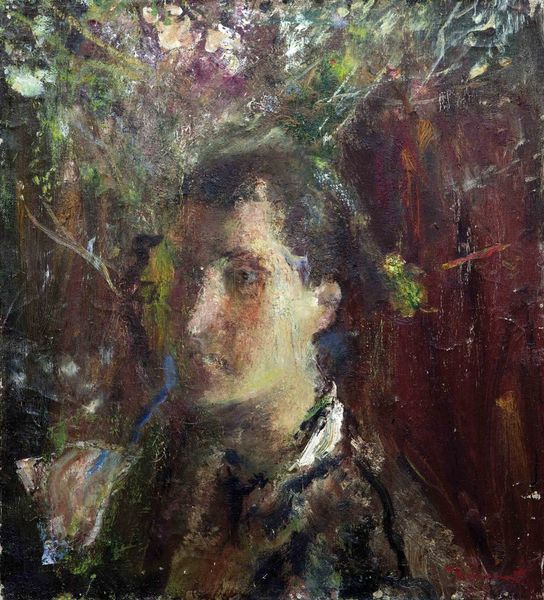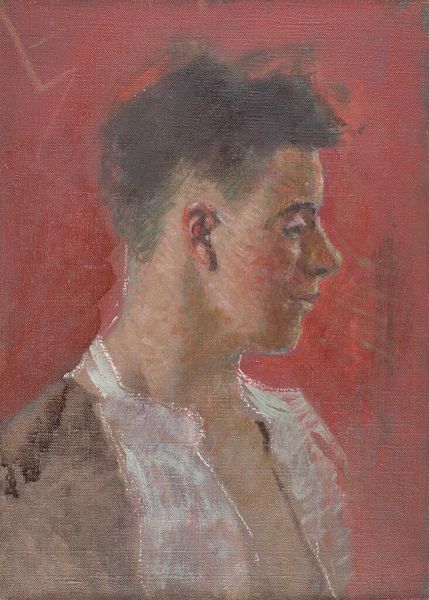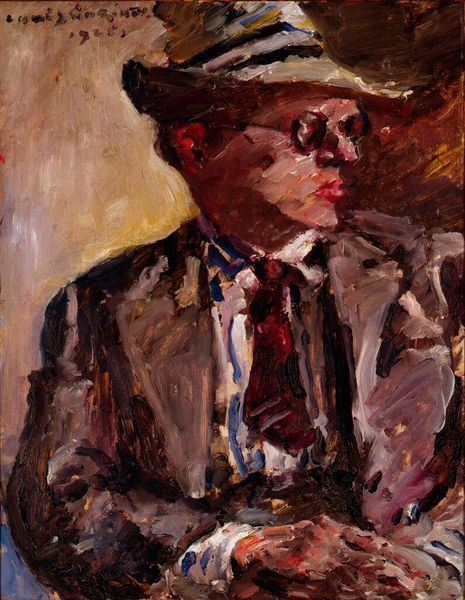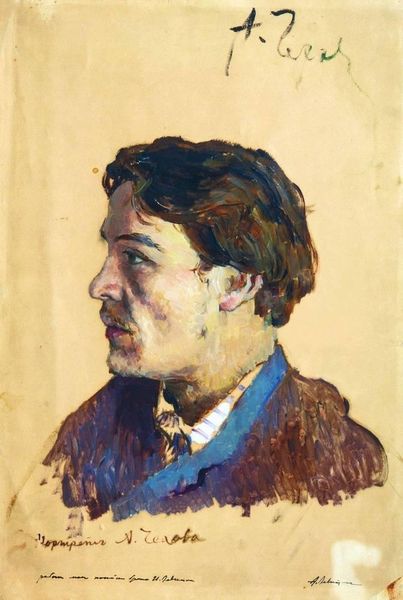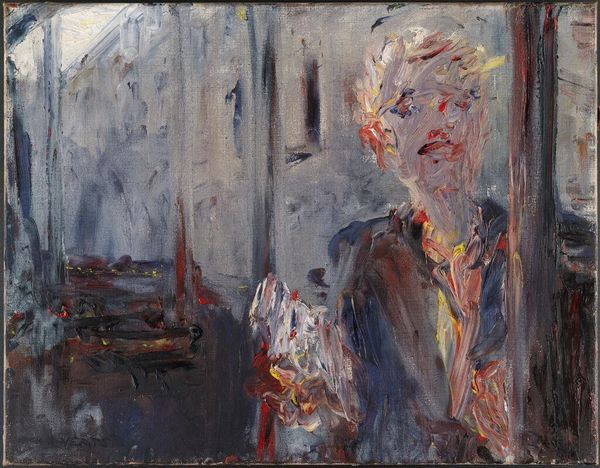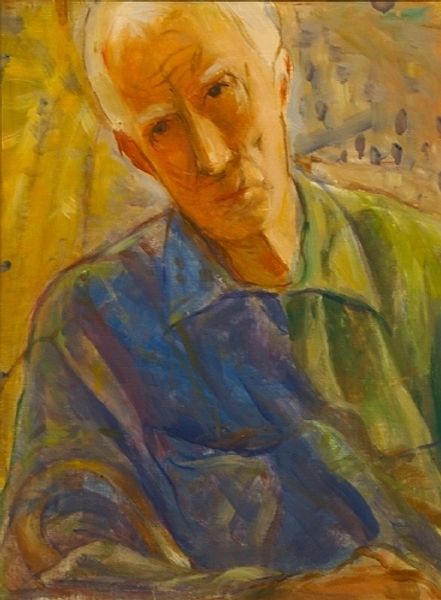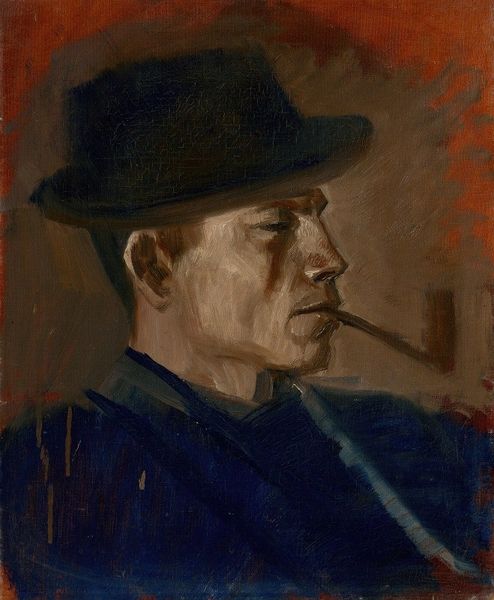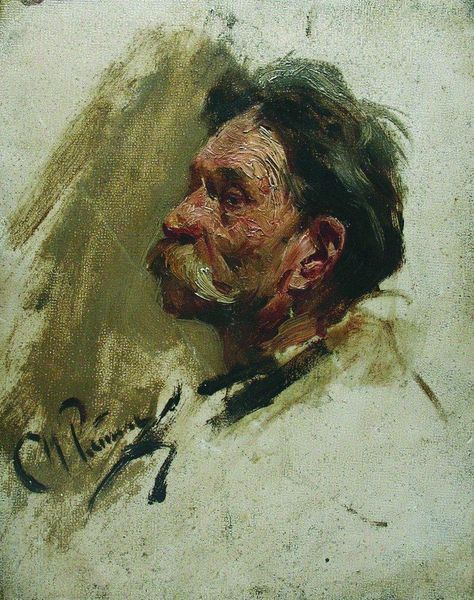
oil-paint, impasto
#
portrait
#
self-portrait
#
oil-paint
#
oil painting
#
impasto
#
expressionism
#
portrait art
#
modernism
Dimensions: 36.2 x 37 cm
Copyright: Public domain
Curator: What an arresting self-portrait! This is Roderic O'Conor's "Self Portrait", painted in 1926. You can really see how his style incorporates aspects of modernism and expressionism here through the generous impasto. What's your immediate take on it? Editor: My first thought? Moody. Almost gothic. There’s something unsettling about the light; it’s stark and the shadow swallows half his face. Like he's wrestling with his own inner demons, which, you know, artists often do. It's got me wanting to dig into what was going on when O’Conor made this. Curator: Precisely. That dramatic chiaroscuro emphasizes a psychological depth. Light and shadow are deeply symbolic, right? O'Conor wasn't just depicting his face; he was trying to externalize something internal. The gaze is averted, which suggests introspection, but also, potentially, avoidance. What is he avoiding? Editor: Maybe he’s avoiding facing something he doesn’t like about himself, or the direction of his art. Or perhaps a creative block – those are awful. Did his other self-portraits strike a similar note? Is this part of a pattern or an exploration? Curator: His works often reflect inner states through expressive use of colour and texture. In terms of colour theory, darks and lights juxtaposed like this suggest tension. O’Conor had, by 1926, pulled back somewhat from the avant-garde explorations that marked his earlier Pont-Aven period. This is less about visual experimentation and more about psychological exploration. Editor: The brushstrokes feel really frantic, like he applied them quickly. They remind me of Soutine. Is he angry? Anxious? It's compelling precisely because of this raw emotion. But I’m really caught up with how much of the face is cast in darkness; do you think there's an element of masking at play here? Curator: Interesting perspective! A mask can protect or conceal, certainly. Self-portraits have a long tradition of revealing as much as they hide. I feel here that O'Conor's playing on the theme of identity, perhaps reflecting a sense of alienation, which was a common preoccupation for many modernist artists during that period. Editor: Ultimately, whether it's revelation or concealment, O'Conor has succeeded. This painting grabbed my attention, it provokes thought. It’s like a challenge! Curator: Indeed! Thanks for these interesting impressions. Hopefully, visitors can now perceive additional aspects, and leave with much to consider.
Comments
No comments
Be the first to comment and join the conversation on the ultimate creative platform.
